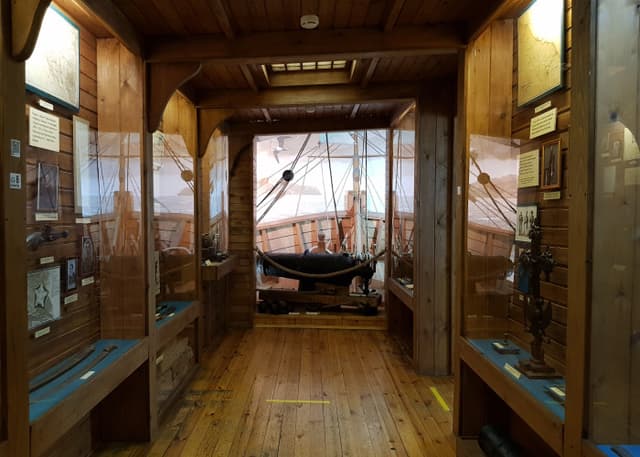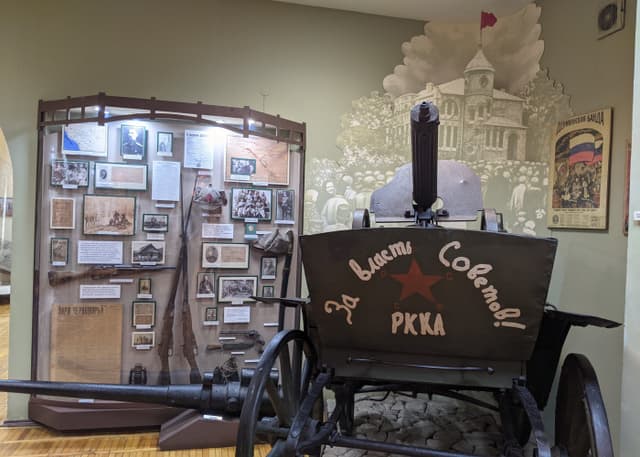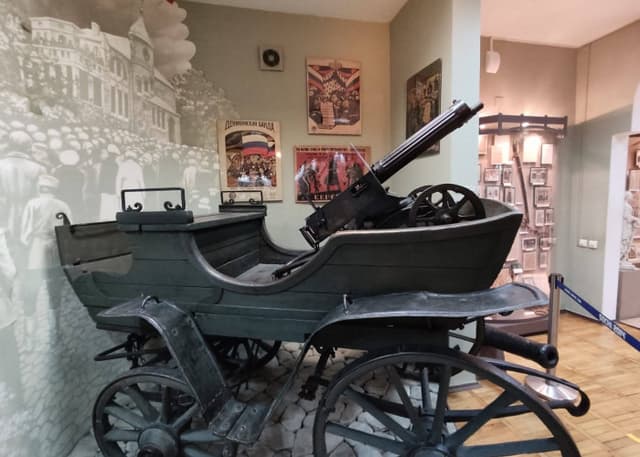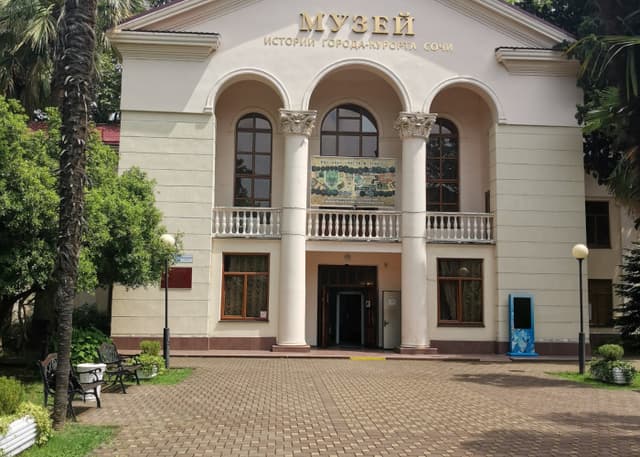The USSR Mega Museum, also known as the "USSR MEGA Museum", is a unique museum that offers visitors an immersive experience of the Soviet era. Opened in 2017 on the territory of the Olympic Park in Sochi, it moved to a more spacious building on Nagatinskaya Street, 7/3 in the Central Microdistrict in 2021. The museum occupies about 600 square meter
Museum of the history of the resort city of Sochi
- Category
- Author:
- Views:927
- Edited6 August 2024, 03:23
- Coordinates:
Photos
Description
The Museum of the History of the City-Resort of Sochi (until 1980 – Local History Museum) was created in 1920 and is one of the oldest cultural institutions in Sochi. The basis for the creation of the museum was the collection of the Sochi branch of the Caucasian Mountain Club, which existed in the Sochi settlement from 1902 to 1917. The members of the club studied the flora and fauna of the Black Sea coast of the Caucasus, archeology, and the life of the indigenous population. This club was headed by the famous engineer and local historian Vasily Konstantinovich Konstantinov, who built the road to Krasnaya Polyana and was engaged in the design of roads leading to the surrounding villages: Plastunskoye, Azhek, Aibga. The collection of the mountain club was located in the house of his mother Ekaterina Pavlovna Maikova. The collection included samples of minerals, herbariums, and household items of the peoples of the Caucasus.
After the death of V.K. Konstantinov and his mother (in 1920), the collection of the mountain club became the property of the state. On July 9, 1920, the Sochi District Executive Committee decided to establish a local history museum. The museum received its first visitors on February 15, 1921. It was then located in a private house, on the site of which the Primorskaya Hotel was later built. The collection of funds numbered about 1 thousand units, there was its own library of local history literature. During the first year of its existence, the museum received 712 visitors.
Museum in the 20-40s
From the mid-20s until 1932, the museum experienced great difficulties, there was no permanent premises, the collections were in boxes, it was necessary to move, or temporarily deploy the exhibition. Only in 1932 the museum was provided with a building on Ordzhonikidze Street, 29, where it was located for more than 60 years.
During the Great Patriotic War, the museum became an important socio-political center of the city. In the summer of 1942, when Sochi became a frontline city, the museum exhibits were evacuated deep into the mountains, some were buried in caves. When the threat of occupation passed, the museum restored the exhibition and was opened to visitors. During the war, the museum's collections received more than 3 thousand items of museum value, telling about the participation of Sochi residents in military operations at the front and their selfless work in the city's hospitals. Museum employees conducted excursions for wounded soldiers, and visited seriously ill patients in hospitals with lectures. During the Great Patriotic War, the museum served more than 45 thousand visitors.
Post-war period
In the post-war period, the museum's activities were fully consistent with the state policy in the field of museum affairs. New exhibitions were built, funds were replenished with unique exhibits, excursions and mass events were held, and trips to rural areas of Kuban were made. A new form of work also appeared: exhibitions from museums in other cities began to be accepted - Tbilisi, Krasnodar, Maikop, Kaluga, Sukhumi, etc. In 1986, new objects located in separate buildings were included in the museum: the Museum "Dacha of the singer V. Barsova" and the Ethnographic Department of the museum in the village of Lazarevskoye.
The newest period. Moving to a new building
The building in which the museum was originally located on Ordzhonikidze Street was built in 1910, and by the end of the 1980s it was completely outdated, did not meet typical museum standards. It was planned to build a new museum building, the construction of which began in 1992 next to the old building on Ordzhonikidze Street at the expense of the investor. After some time, the construction was stopped due to lack of funding. Soon the design began, and then the construction of a new building for the Chernomorye sanatorium. At the end of 1999, the building at 29 Ordzhonikidze Street was demolished.
In 2000, the museum was moved to another building, completely losing its permanent exhibition. The staff faced the task of not only developing a new concept for a permanent exhibition, but also reconstructing the building, which was not suitable for a museum institution.
This building, located at 54/11 Vorovskogo Street, was erected in 1936, during the first general reconstruction of the Sochi - Matsesta resort as a comprehensive school and reflects the stylistic features of Sochi architectural structures of that period. Details of architectural plasticity, symmetrical solution, harmonious proportions of the Corinthian colonnade and Ionic pseudo-columns characterize the neoclassical style, to which this building can be attributed. Similar structures formed the architectural background of the development and appearance of Sochi in the 1930s, which is now lost.
That is why in 2000, when the Museum of the History of the Resort City of Sochi was transferred to other premises, it was given this building, which, thanks to its architectural features, corresponded to the functional purpose of the museum, its conceptual foundations and museological guidelines.
Modern exhibitions and collections
The museum was faced with the task of actively improving and rethinking the entire exhibition culture in accordance with the leading trends of our time, without abandoning traditional methods in the methodology of constructing exhibitions.














